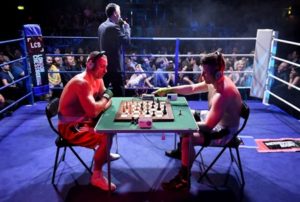CELPIP Speaking: Task 8 – Describing and Unusual Situation
Task 8: Describing an Unusual Situation
Instructions:
- Test-takers must describe something unexpected and perhaps unusual to someone who is not there to see it.
- Speakers should use specific vocabulary to describe the object or scene precisely. This task rewards test-takers who use accurate vocabulary to describe.
- The speaker has 30 seconds to prepare and 60 seconds to respond
Procedure:
- Generally, the first sentence spoken should give an overview of the object or scene.
- There should be at least 2 or 3 attempts at description, which can include spatial dimensions or the proximity of objects in the scene or the object itself in relation to each other.
- Include colour descriptions and what the object reminds you of – another object with similar features – essentially try to give the listener who cannot see the object a visual image as best you can.
In 30 seconds:
– Write down a description of what is going on in the scene or different ideas of what the object reminds you of.
In 60 seconds:
Note: A strong paragraph form will help you move through your description
- A topic sentence that allows for an overview and the general shape or scene to be
described.
- 2 or 3 descriptive details of an object–what it looks like– or 2 or 3 descriptive
sentences of a scene presented.
- Offer a concluding sentence.
Example 1:
You are in a furniture store and you see a bed you would like to buy, but the store clerk won’t let you take a photo. Telephone a member of your family. Provide a full and clear description of the bed and ask if you can buy the bed.
Response:
Hi Mark,
I am in Burgundy Furniture and I can see this bed in front of me, but it is very strange looking. I want to know if I should buy it or not. Let me describe it for you. It looks like a single bed as the head and toe board are about the right size in terms of width and length, but what is really interesting is the bed part of the bed. There is no box spring just a piece of wood that outlines the shape of a person lying on their side while sleeping. The mattress on top of the wood is the same outline, so basically if I bought this bed, people can only sleep in this bed on their left side. I guess it is called a left-side bed. Do you think I should buy it?

Statistics: 139 words spoken in approximately 58 seconds.
Marker’s score = 11
Content/Coherence: The response is organized in a paragraph form and it includes several accurate, contextually appropriate details.
Vocabulary: The test-taker uses a range of descriptive language that assists the listener to recognize the furniture being described (outline, single bed, shape of a person lying on their side, left-side, no box spring).
*Listenability: The speaker has clear pronunciation and keeps a steady tempo throughout the response. There are several different sentence types.
Task Fulfillment: The speaker addresses the person they are talking to and answers the question prompt. The speaker speaks for an appropriate length of time as well.
Example 2.
You see two people playing a sport at a sports centre. Call your friend George and describe in detail what the sport is like and what each player is doing. Ask him if she would be interested in trying this sport sometime.

Response:
Hi George. How are you
Guess where I am? I am at the hockey arena tonight. I thought I was going to see a boxing match tonight, but you will never guess what I am witnessing! There is a boxing ring in the middle of the arena with people crowded around it and there are two men at the centre of the ring with an announcer, but guess what the supposed boxers are doing? They are sitting at a table with their boxing trunks on with no shirts, and they are playing chess with headphones on. So, they are not boxing they are playing chess–isn’t that weird? I thought I was going to see a real fight. We should try this sometime whenever we have an argument to settle. What do you think?
Statistics: 130 words spoken in approximately 53 seconds.
Marker’s score = 11
Content/Coherence: The speaker gives a long description of the chess match in front of them. The speaker gives a logical account of what is happening, so the response in both accurate in terms of content and coherence.
Vocabulary: The test-takers uses prepositional phrases to help spatial place people and the supposed boxers in the scene (in the middle of the area, crowded around, at the centre of the ring, at a table)
*Listenability: This criterion depends upon the speaker’s ability to speak with rhythm, pronunciation, intonation, pauses, interjections, and self-correction. However, throughout the response, the grammar is correct.
Task Fulfillment: The task is complete as the speaker answers directly to his friend, George, and gives an organized response throughout. The tone fluctuates a little as the speaker seems flabbergasted or somewhat shocked about what they see in the ring, but this is contextually acceptable.

